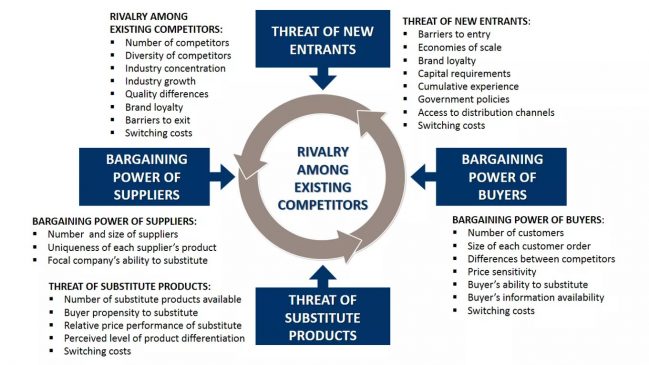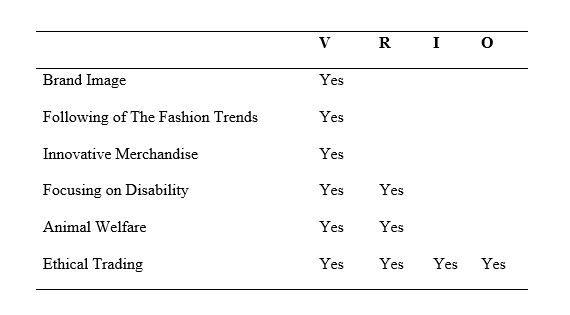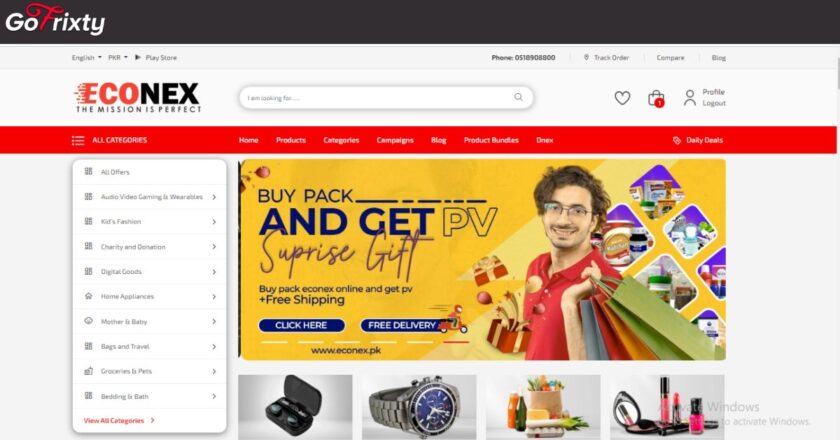Section 1. Mission, vision, and stakeholders – ASOS
Being a renowned fashion and beauty retailer in the world, ASOS has specifically designed mission and goals for ASOS customers. The mission of ASOS has been made clearer by the executive members as being world’s best online fashion and beauty retailer and shopping destination for the stylish and fashion-loving people of the 20-somethings (Madtolive); Thus, ASOS’s mission is “to be the world’s leading online shopping destination for the fashion-lovers of 20-somethings.”
ASOS has focused on the following characteristics or components of its business to be made its mission:
- World’s leading online retailer
- Products for the fashion-lovers
- The age factor of the ASOS customers
The “world’s leading online retailer” component expresses the global reach and leading capabilities of the company. The provision of “products for the fashion-lovers” focuses on the major reason of being of the As Seen on Screen PLC, as the name defines that it is made for the individuals which have the urge to be up-to-date and fashionable just like the stars and celebrities on the screen. The “age factor of the customer” is described to depict the age for which firm works. As the founder of ASOS, Nick Robertson, during the domestic expansion of the company, also said that “She’s 23, better looking than average, she loves to turn heads, Saturday night is her biggest night of the week. She’s definitely not married, and she just loves going out”. Until now, the firm focuses on the 20-something age group who are young, get aspirations from stars and celebrities, fashion-lovers and like to have fun.
As per the values of the company, the vision is “to be the world’s best customer-centric organization that provides quality products to the fashionistas online”. ASOS has focused on the following characteristics or components of its business to be made its vision:
- Worldwide Reach
- ASOS customers prioritization
- Quality of its products
- The diverse range and in-the-style products
The “worldwide reach” component of the vision statement is about being a leader in the international E-commerce market. The company believes in keeping the customer first and considering him as a vital stakeholder in the online retailing business. The “quality” component focuses on the provision of high-quality products with no compromise on this factor. In addition to that, the provision of “diverse and in-the-style products” is also considered mandatory by the firm.
The vision and mission statement of the ASOS possesses strong characteristics that specify a firm’s marketing mix, and the target market approaches. These statements support the sustainable competitive advantages of the firm as they include the following:
- Offering service propositions and appealing products
- Environmental impacts
- Business transparency
- Philanthropy and community services
As described in their values and goals, ASOS has sustained its competitive edges by providing competitive (i.e., high quality and reasonably priced) products and commodious services (i.e., speedy or free delivery, free return policy). For the company, fashion with integrity describes operating and managing the business efficiently and transparently, so the customers can use the products and have full knowledge about it. They should be satisfied with buying from a trustworthy and responsible platform that is actively engaged in maximizing customer’s benefits and eliminating the negative impacts and reducing the online shopping risks (Gaming). Moreover, the biggest impact on the environment was the carbon emissions of during product deliveries to the customers and waste from the packaging of the products. Whereas, ASOS has announced that it has been certified as a Carbon Neutral Organization as an apprehension of its initiatives towards the reduction of the carbon dioxide emission. Thus, being an environmentally friendly firm is a sustainable competitive edge of ASOS.
Section 2. Scenarios and industry analysis – ASOS
As per the case, the fashion industry has been through many ups and downs throughout its history. The approach to be used here is the Porter’s Five Force Analysis which is purely used to define the competitiveness of a market and how the profitability of a business is determined by its competitive nature. To achieve this, the following framework draws the five factors, termed as “The Porter’s Five Forces.”
These forces are as follows:
- The threat of new entrants in the market
- Competitive rivalry
- Buying power of customers
- Buying power of suppliers
- The threat of product substitutions

As per the case study, the business environment of the fashion industry has often been very complex and thus, required holistic solutions. The success of a firm does not only depend upon its own management and operations but also on the industry in which it operates. Thus, this five-force analysis would assist us in comprehending the relative strength of all the key players.
The competition within an industry is strongly influenced by the structure of its industry and the strategies applied and possessed by the company. The competition is deeply rooted in the basic structure of an organization and its overall industry and it also keeps on increasing by the performance of a firm’s competitors. The strength of competition among the industry is calculated by the five forces whose collective power and potential determine an industry’s returns and profits. If the barriers to entering a market are very high, then the returns on investment are also greater; Thus, established companies want to restrict new entrants from entering into the already existing market.
In the case study, the history has been divided among certain eras, so we would do the Porter’s Five Force Analysis accordingly. Fashion retail companies and online fashion specialists like ASOS, my-wardrobe, NEXT, Net-a-Porter, MANGO, Missguided, Marks & Spencer PLC, Amazon, Boohoo, and Topshop have been mentioned to be the leading market leaders.
The threat to ASOS of new entrants in the market
As discussed that ASOS was expected to improve as something new to this industry, so this force is considered somewhat little in the fashion industry. Notwithstanding, new entrants may discover versatile and unique ways to introduce their own products (no matter they have some exceptionality or not), and in that capacity, they might try to establish their brands novel.
As the fashion brand, NEXT has reportedly originated in the year 1864, it had threats from the new entries as competitors. Thus, in that condition, the fashion industry’s business is at ‘high risk and high reward’ for new candidates — it’s not very hard to get a foot in the entryway and trying to copy or duplicate others.
Rivalry among competitors
If we examine the fashion business with regards to the competition, it’s quite fascinating. There is a lot of retailers, fundamentally offering similar brands but there are some brands that charge high rates for presenting their ideal brands. In this regard, the pace of development is quite slow, therefore, the market is getting full of fundamentally similar items. Consequently, the fashion industry is a troublesome business to get feet into, which is not uplifting news for the marketers and sellers.
According to exhibit 5 in the case study, ASOS was ranked on 14th number in top retail websites in the UK in December 2014. Thus, among its direct competitors, Amazon and NEXT acquired 1st and 12th position respectively, depicting strong competitive rivalry.
Bargaining power of ASOS customers
The bargaining efficiency of the customers was always a keen factor to be highlighted, who are powerful at their ends. It is always the choice of ASOS customers to buy the product of their personal choice, the peer’s suggestion, or be influenced by someone. They can switch the sellers or the brand because ASOS customers are always considered to be the king of the market. ASOS deals in the fashion industry, the buyer’s power is considered to be a temperately extensive power. Whereas, marketers also know that clothing and fashion industry has to influence the compaction of vendors and buyer’s selection approaches. The buyer will have plentiful elective areas to select for attire and minimal motivating force to remain with one specific organization, giving them a lot of backhanded bargaining power.
Competitors compete against each other by practicing descending pressure on the costs and requesting higher quality or better execution, everything to the detriment of the business’ profitability.
Clients, the purchasers inside an industry, are in a solid position, because of the high extent of their purchases in an industry’s aggregate deals or additionally when institutionalized items are sold which can be acquired from each competitor and the conversion costs are low (ASOS Plc in Apparel and Footwear).
The bargaining power of the buyers gets observable through the provision of high standard services, high-quality products, and price cuts.
The higher the bargaining power of the buyers, the lower gets the attractiveness of that industry.
Bargaining power of ASOS suppliers
In the fashion retail industry, supplier power is moderately little and unimportant power. Most of the apparel firms source their products from third world makers who get just parts of the benefit. Suppliers have little control over the fashion business as, lamentably, they are superfluous and can simply be swapped out. Accordingly, input costs for this industry are moderately low and will remain there until the point when everything gets closed by the development gap at the global level.
Numerous suppliers work in different businesses which reinforces their aggressive position in branches which are not especially essential for them. In this way, the appeal of an industry diminishes with the expanding capacity of the suppliers to have an impact on the purchase costs. Suppliers who incorporate forward and could in this way make the result themselves later represent a great risk since such a supplier would not be subject to the purchasers and could showcase their own products or significantly pressurize the buyers.
The threat of product substitutions
Substitute products have the capacity to control the profit potential of an industry. The interest in a product is impacted by the cost and nature of substitute products. At the point when the relative expenses of a substitute item go down or when its capacity to fulfil the need of the client increases, then the growth of that industry is negatively influenced.
Amazon, Boohoo, Missguided, and Topshop have been reported to be among the major competitors of ASOS. In the 2014-2015 era, due to the drop in stock price, fire at an ASOS warehouse and other troubles caused a major breakdown in the yearly sales. Substitute products represent a specific risk to businesses, where the client reliability to a specific item or brand is low. Providers of such products can expand their pieces of the pie generally rapidly.
Section 3. Resources and capabilities ofASOS
The strategic capabilities of ASOS can be categorized as the threshold capabilities and the capabilities for competitive advantage. Based on these strategic capabilities, several resources and competencies are evaluated.
In the threshold capabilities, there come two kinds of resources that the company possesses, tangible and intangible. Tangible resources of the ASOS mainly consist of the financial and material resources, whereas, the intangible ones consist of the human resources, technology, branding, information, cultural and market resources. The competencies of threshold capabilities include market competence, institutional and technical competence.
Similarly, the capabilities for competitive advantage are also dependent upon company’s resources as the focus on the ethical trading, animals’ welfare, focusing on the capabilities for competitive advantage bring out the recycling policies and resources of the firm, the disability plan, and responsibility towards the workers.
Using the VRIO analysis of firm for analyzing these strategic capabilities (i.e., brand image, following of the fashion trends, innovative merchandise, focusing on disability, animal welfare, and ethical trading) suggests the following results:

The firm prioritizes the importance of creating a strong brand image and thus, has always been taking initiatives towards positioning the company’s strong image in the mind of the customer. Consequently, the brand is valued and has competitive equality.
As the name of the firm suggests, ASOS has always brought the latest fashion trends for the fashion-lovers of 20-somethings. Thus, the fashion trends are valued and followed by the people resulting in competitive equality for the firm in its market.
The company has been bringing innovation to its products and services by keeping the focus on the needs of the fashion-lovers. Thus, innovative merchandise is also a strategic capability of ASOS that has brought competitive equality for the firm.
The company prioritizes its focus on the disabilities and this complies with the value and rarity factor of the analysis, resulting in creating a short-term competitive advantage of the firm in the industry. Similarly, the company’s focus on animal welfare is also valued and rare, thus it also creates a short-term competitive advantage of ASOS in the fashion industry (Analysis of Business Strategy at ASOS).
Lastly, the ethical trading complies with all the value, rarity, imitability and the organizational factors of the analysis as firm’s foremost objective is that the customer is a vital stakeholder of firm so, he should be satisfied with buying from a trustworthy and responsible platform that is actively engaged in maximizing customer’s benefits and eliminating the negative impacts and reducing the online shopping risks. ASOS’s focus is on high-quality products and ethical trading, resulting in generating a long-term competitive advantage of ASOS in the fashion industry.
Section 4. Business and corporate strategies
The online fashion retailing is a very competitive market. The customers’ needs keep on changing and a firm’s success and the industry trends rely on them. Delivering the best quality products to the customers is a competitive advantage, that in return, creates value for the company and maximizes its profit. For ASOS to be on top of the industry, the fashion trends must be monitored and constantly and strategically be translated into transforming new products and gaining customer’s trust and satisfaction.
The strategy management system of ASOS covers a few zones. Marketing, Designers, Customer Services, Customers and Corporate Culture are key components. In everything they do, they prioritize customers and place them at the centre of their heart. But nowadays, this is not at all. In today’s digital world, innovation, Internet, and social networks are vital components of a company’s strategy. As a retail fashion enterprise, one key component is the designer. As the company focuses on youthful fashion, the needs of young customers are better understood by the young designers. The customers would be attracted more towards the website if the firm places new products on the shelf every week. Therefore, to keep the designer force young and to get the maximum young blood, ASOS management should keep on launching different workshops and internship programs.
ASOS management has created strong values of being restlessly innovative, respectful and collaborative, customer-obsessed and passionate. These values are clearly depicted in their strategy formulation and day-to-day business. Similarly, the values possessed by the stakeholders are essential too. Customers want affordable and trendy fashions. In addition to that, the firm focuses on “fashion with integrity”. By achieving these objectives of sustainable fashion and business with high strands of ethical trade, ASOS should keep on taking maximum initiatives towards environmental and community sustainability to build up a strong corporate image.
The ASOS is popular in Australia and the US and very strong in the UK. In the UK, July 2012, shoppers spent £6.2 billion to buy products online. The year-to-year growth on the e-tail clothing, accessories and footwear was 23% in January 2012. However, brands like GAP and ZARA have strong links for promoting their brands globally and attracting maximum customers. Therefore, it might be a disadvantage for ASOS on getting popular without physical outlets. Thus, senior management should consider this point to overcome any business or corporate strategy weaknesses.
The senior management at the ASOS could also to target new markets, as for now, its major competitors are the high street brands so, to develop a strong competitive advantage, ASOS can use certain strategic approaches to enter high-end fashion markets. Merging with other firms could also prove to be very beneficial for the ASOS in the long-term. Developing new products and penetrating in new markets could also help the firm in gaining a bigger share of the fashion market.
The product prices of ASOS vary extensively so the firm might not be able to compete for the cost leadership. Although ASOS also offer luxury brands, their major competitors are the high street retailers, so the company would implicate to compare and compete for the lowest prices.
For overcoming the negative impacts of political and economic factors, the fashion retailers would have to continue to deliver and maintain value for their consumers. Thus, senior management should focus on financial investments to increase the product’s quality and price. Meeting customers’ demand is another strategy to achieve product development. The business performance could also be increased by constantly communicating the modifications to the customers.
By evaluating the benefits and results of these strategies, as a conclusion, I would suggest that the diversification strategy would be very effective to pursue as it would require less investment and cost from the firm. Consequently, the competitive advantages of ASOS would be sustained.
Read Advertisement analysis of Lee jeans VS Ranch and a Rhetoric analysis.





[…] ASOS PLC Case Study – Discover Fashion Online […]
[…] ASOS PLC Case Study – Discover Fashion Online […]
[…] Read ASOS case study, A Rhetoric Analysis, Advertisement Analysis, AIDA analysis, Emirates Airline Marketing Strategy Analysis, and Rhetoric analysis of TCS advertisement with examples. […]
Thanks for the information, i am bookmarking it for future updates.
[…] ASOS is a private limited company registered in the United Kingdom and mainly deals in fashion and designing for both males and females. It was founded in 2000 by Icelandic entrepreneur and CEO Nick Robertson. According to the company website, ASOS Plc is headquartered in London, with stores across the United Kingdom and internationally. […]
[…] ASOS PLC Case Study – Discover Fashion Online […]